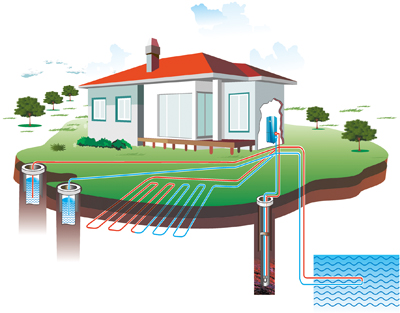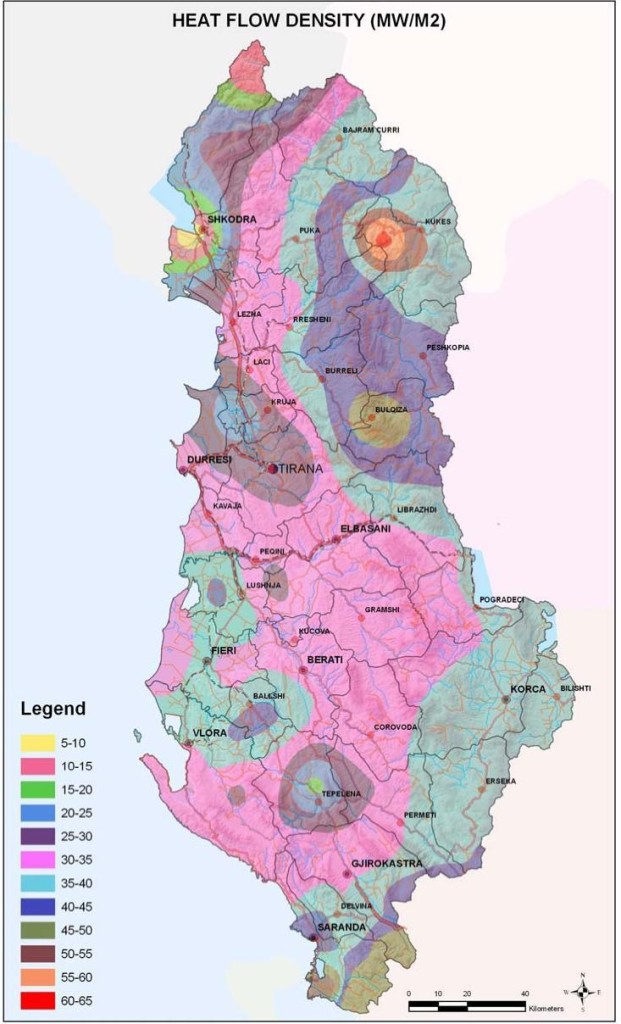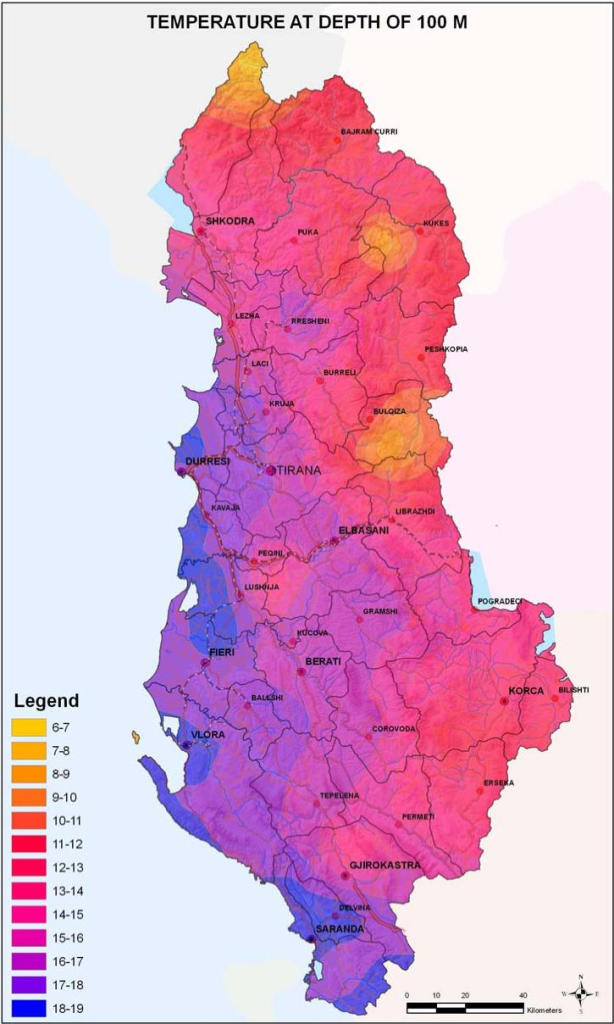Albania Geothermal Resources
Geothermal resource consists of underground layers or springs that contain water with a temperature level which is enough to gain useful forms of energy. Usually, the water is heated through the higher temperatures in the earth core. The water temperate level can be used in the buildings for heating with low temperature directly or with the help of heat pumps. In case of very high temperatures or when the water is in the form of steam, electricity is produced. Here, focus is on the utilization of geothermal resources for heating purposes, where it is expected that most resources are on a moderate temperature level, i.e. they need to be ‘thermally treated’ by heat pumps.
Background
Albania is actually in the feasibility phase of assessing the geothermic energy use potentials. The geothermic situation of Albanides presents two directions for the use of geothermic energy, which has not been used so far. Firstly, the thermal sources with low enthalpy and maximum temperature up to 80°C. These natural sources are in a wide territory of Albania, from the South bordered to Greece and in the North-East part of it. Secondly, the usage of the deep vertical well of the abandoned oil and gas sources can be used for heating system. The temperatures of 145 deep well in mines and different levels have been measured. The challenge with this type of renewable energy is not the availability of these resources, but how to utilize these abundant resources of heat in an economical way.
Potential
Geothermal resources are widely available in Albania. Like the neighbouring countries, the potential of geothermal heat is large. There are many thermal springs of low enthalpy with a maximal temperature up to 80 ºC as well as many wells (abandoned gas or oil) in Albania, which represent a potential for geothermal energy.
The geothermal field is characterized by relatively low values of temperature. The temperature at a depth of 100 meters varies from 8 to 20ºC. The highest temperatures (up to 68ºC) at 3000 meters depth have been measured in the plane regions of western Albania. The temperature is 105.8ºC at 6000 meters depths. The lowest temperature values have been recorded in the mountainous regions. There are many thermal springs and wells of low enthalpy. Their water has temperatures up to 65.5ºC (Frasheri at al 2004). Different characteristics of thermal spring and wells with low enthalpy are given in the following tables.
The thermal spring and wells are located in three areas: the geothermic area of Kruje, Ardenica and Peshkopi.
Kruja geothermal Area contains the majority of geothermal resources in Albania. The most important resources, explored so far, are located in the Northern part of Kruja Geothermal Area, from Llixha-Elbasan in the South to Ishmi, in the North of Tirana. In Tirana-Elbasani area heat in place is (Ho) (5.87 x 1018 – 50.8 x 1018) J, the identified resources are (0.59 x 1018 – 5.08 x 1018) J, while the specific reserves ranges are between values of 38.5 – 39.6 GJ/m2. In the southern part of this area, where is located Galigati – Sarandaporo zone, has been identifying lower concentration of resources 20.63 GJ/m2, while geothermal resources up to 0.65 x 1018J.
Ardenica Area. Ardenica reservoir has (0.82 x 1018) J. Resources density varies from (0.25- 0.39) GJ/m2. The boreholes have been abandoned and are actually awaiting for renewed investments. In order use the geothermal energy, the reconstruction of the wells containing fountains of hot water is needed, when technically possible.
Peshkopia Area. Water temperature and big yield, stability, and also aquifer temperature of Peshkopia Geothermal Area are similar with those of Kruja Geothermal Area. Therefore the geothermal resources of Peshkopia Area have been estimated to be similar to those of Tirana- Elbasani area.
Installed capacity
Apart from some Spa’s using geothermal resources for treating patients or clients, there are basically no house warming systems used out of them.
Characteristic features for Albania
It is explore that geothermal resources are available in the majority of the country. There might be some limitation in the coastal areas due to infiltration in the salty sea water.





